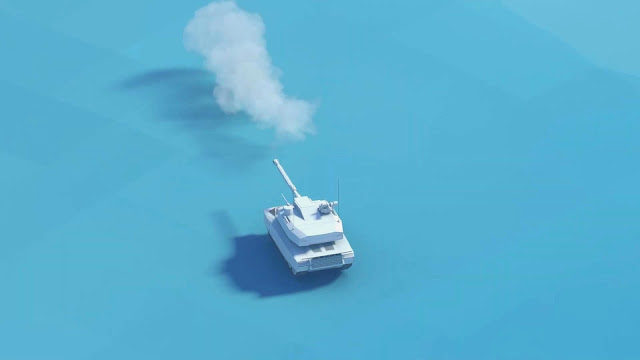As i walk through the valley of the shadow of death, I have no fear because I am the baddest motherfucker in whole valley.
Saturday, January 9, 2021
About a Challenger-1 MBT weight breakdown (1983)
A Challenger-1 weight breakdown. Serial vehicle it may not have ended up exactly these weights in every respect but it was about 62 tonnes. Serial MBT weight can be very small difference with these numbers.
Via Jeremy Retford
Friday, January 8, 2021
Night-Vision Revolution: Less Weight, Improved Performance
Leveraging new tech, DARPA aims for night-vision goggles the size and weight of regular eyeglasses
For decades U.S. warfighters have benefitted from advanced night-vision technology, allowing pilots to fly low-level missions on pitch-black nights and ground forces to conduct operations against adversaries in the dark. But current night-vision goggle (NVG) technology requires cumbersome binocular-like optics mounted on a helmet, offering limited field of view (FOV) and putting unhealthy strain on the wearer’s neck. Building on recent scientific advances in photonics and optical materials pioneered in DARPA’s Defense Sciences Office (DSO), a new effort seeks to develop next-generation NVGs that are as lightweight and compact as a pair of regular eyeglasses or sunglasses.
DARPA today announced its Enhanced Night Vision in eyeglass form (ENVision) program. ENVision aims to create lightweight NVGs that offer a wide FOV across multiple infrared (IR) spectrum bands without needing separate optics for each IR band. The goal is to enable night vision through fog, dust, and other obscurants as well as provide thermal vision – all via a single flat lens. A Proposers Day for interested participants is being held via webinar on January 21, 2021.
“Our warfighters experience significant neck strain from current NVGs caused by the weight of the optics extending 4-5 inches in front of their helmets,” said Rohith Chandrasekar, program manager in DARPA’s Defense Sciences Office. “If you’ve never worn NVGs for hours at a time imagine wearing a baseball cap all day with a two-pound weight attached to the front of the bill – that gives you a small sense of the stress experienced. Extended use of such systems leads to a condition where the neck no longer has energy to keep the head upright requiring warfighters to use their hands to lift and point their heads. NVG wearers also have to swivel their heads frequently for peripheral vision since current optics only provide a 40-degree field of view compared to the 120-degree wide view we have with our eyes, which only makes use of NVG systems more painful.”
Besides the weight and field-of-view constraint, current NVGs provide only a narrow segment of the IR portion of the spectrum (typically near-IR) that limits what types of threats the viewer can see at night. Efforts to expand FOV and IR bandwidth to date have involved increasing the number of optics, which increases weight.
The ENVision program is designed to break the paradigm that increased performance can only be achieved by an increase in weight.
“DARPA investments over the past decade have led to breakthroughs in the areas of planar optics, detection materials, and novel light-matter interactions,” Chandrasekar said. “ENVision will leverage these advancements, amongst others, to develop enhanced night-vision devices in lightweight eyeglass form factors.”
ENVision will also investigate the possibility of night vision using direct photon up-conversion from infrared to visible photons using thin materials.
“This will further simplify NVG systems by advancing from the multi-step conversion currently used to a single step up-conversion process,” Chandrasekar said. “Some of these processes even conserve the momentum of photons, which, in theory, could enable night vision without the need for any optics.”
The ENVision program focuses on developing prototypes of multi-band, wide-FOV night vision systems and investigating methods to amplify photon up-conversion processes from any IR band to visible light.
Wednesday, January 6, 2021
BMP-2 with K-1 ERA
"Field tests of these complexes, however, showed their complete unsuitability for use in the protection of the IFV/APC. Thin armor during a joint explosion of a DZ block and a grenade, when the total mass of the blown up explosive reached 1,1-1,2 kg, simply broke, incapacitating the machine itself."
PLAAF recruitment video
PLAAF recruiting video shows official hint about H-20 Chinese stealth bomber. According to the rumors, in 2021 PLAAF will show the H-20.
Parade preparations for the 100th anniversary of the founding of the Iraqi army
Monday, January 4, 2021
French vision for the MGCS - Future european Combat Vehicles destroying the Russian T-14 Armata tanks
Very interesting video, about French vision for the future battlefield. On video we can see some artist models on the French vision for the MGCS, and its action against Russian T-14 Armata MBT, which one showed twise.
Three different versions of MGCS:
- Canon which shows a large caliber coax which seem to can provide indirect fire.
- C² : Command and Control which seem to have a 40mm
- Missile: Same autocanon as a C², 6 missiles ready and no RCWS












































